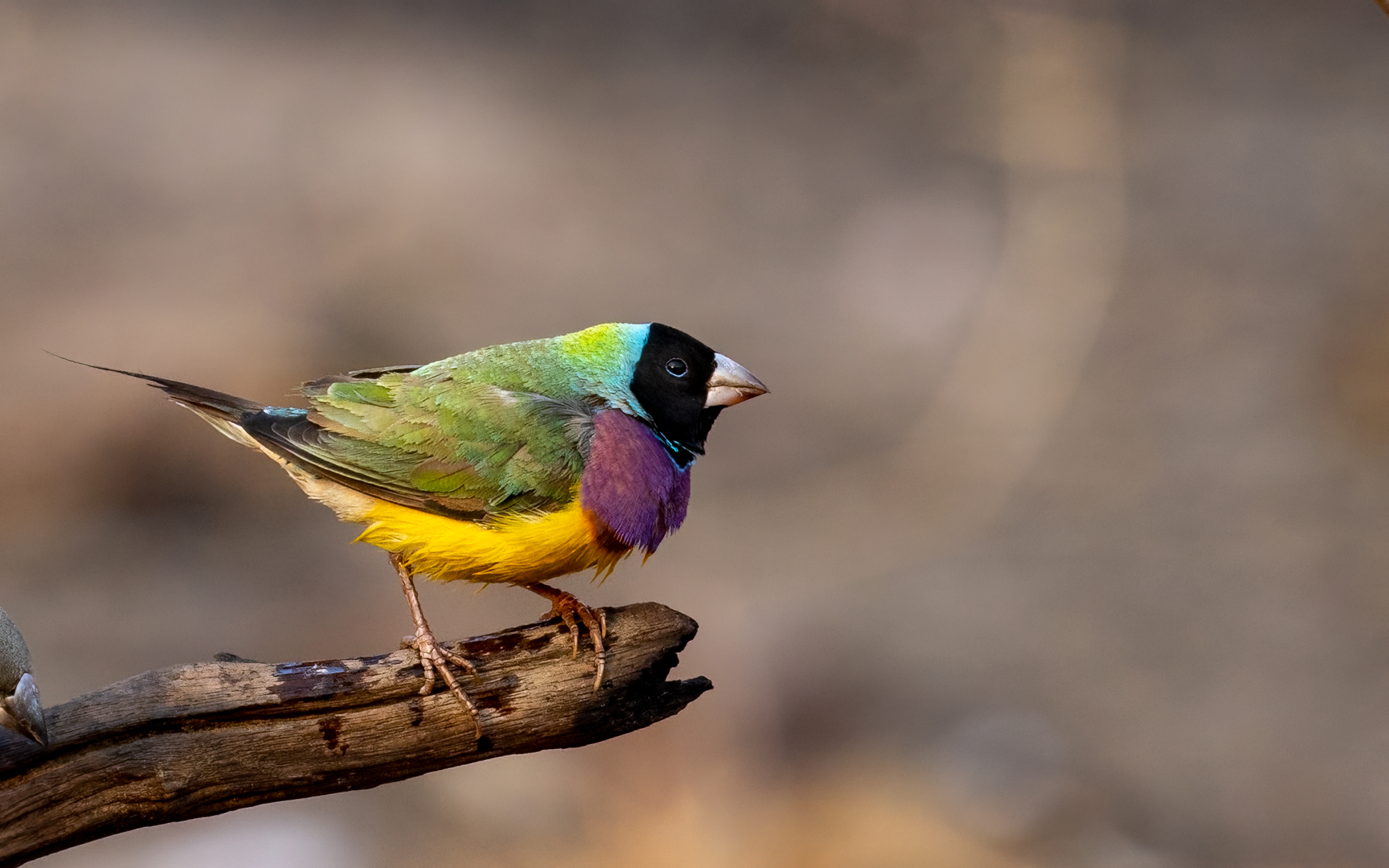| Common name | Lumholtz’s tree kangaroo and Bennett’s tree kangaroo |
| Scientific name | Dendrolagus lumholtzi, Dendrolagus bennettianus |
| Type | Mammal |
| Diet | Herbivore mainly eating leaves, roots, and seasonal fruit. |
| Average lifespan | Between 15 and 20 years |
| Size | The Lumholtz’s tree kangaroo weighs around 7kg with an average body size of 50-56cm. The Bennett’s tree kangaroo weighs between 10 and 14kg with a body size between 69-76cm. |
High in the branches of the forest canopy seems an unlikely home for a bounding kangaroo, yet that’s exactly where you’ll find a weird and wonderful Australian tree kangaroo.
A living link to the ancestors of our modern-day macropods, Australia is home to two species of tree kangaroo, the Lumholtz’s tree kangaroo (Dendrolagus lumholtzi) and the Bennett’s tree kangaroo (Dendrolagus bennettianus).
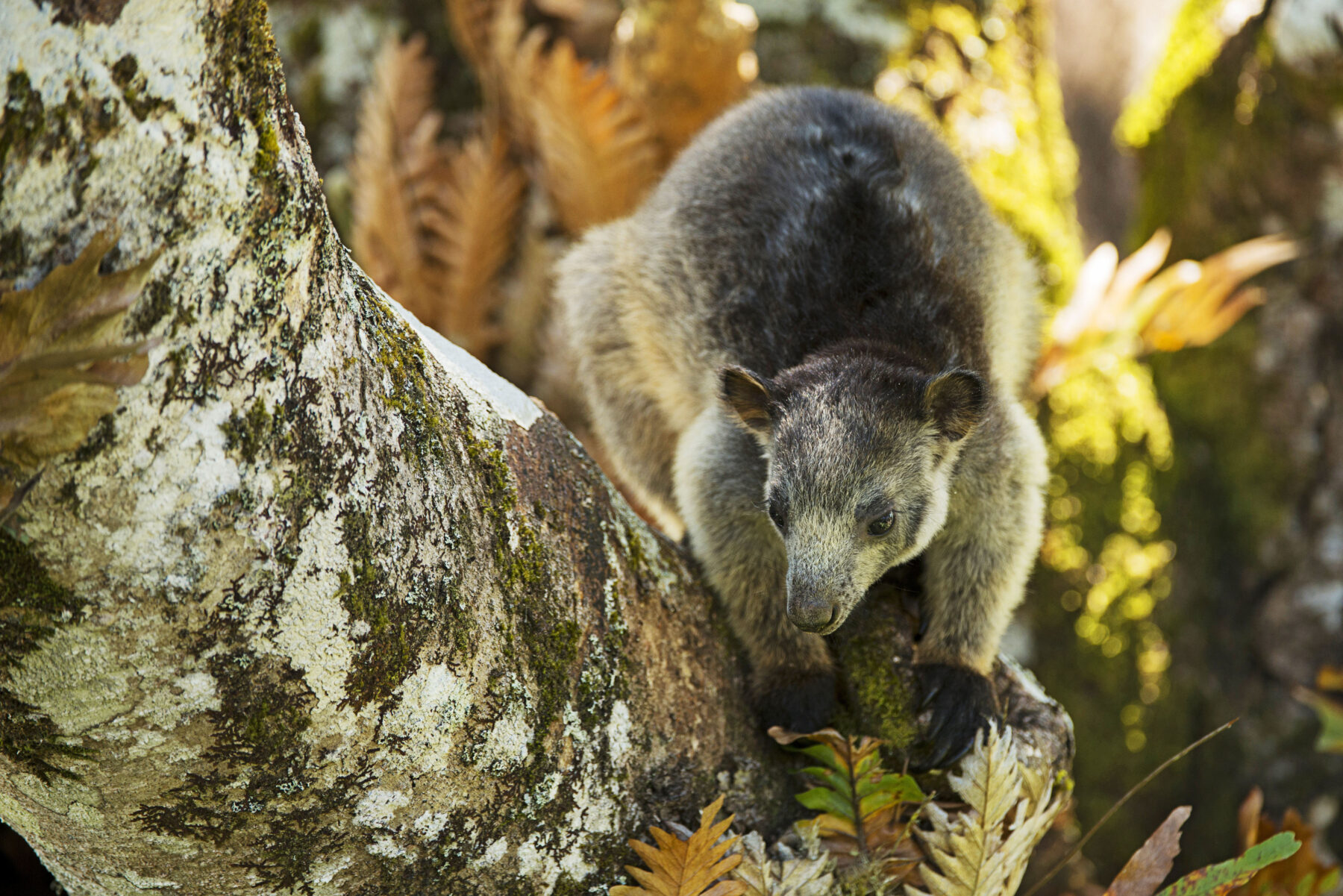
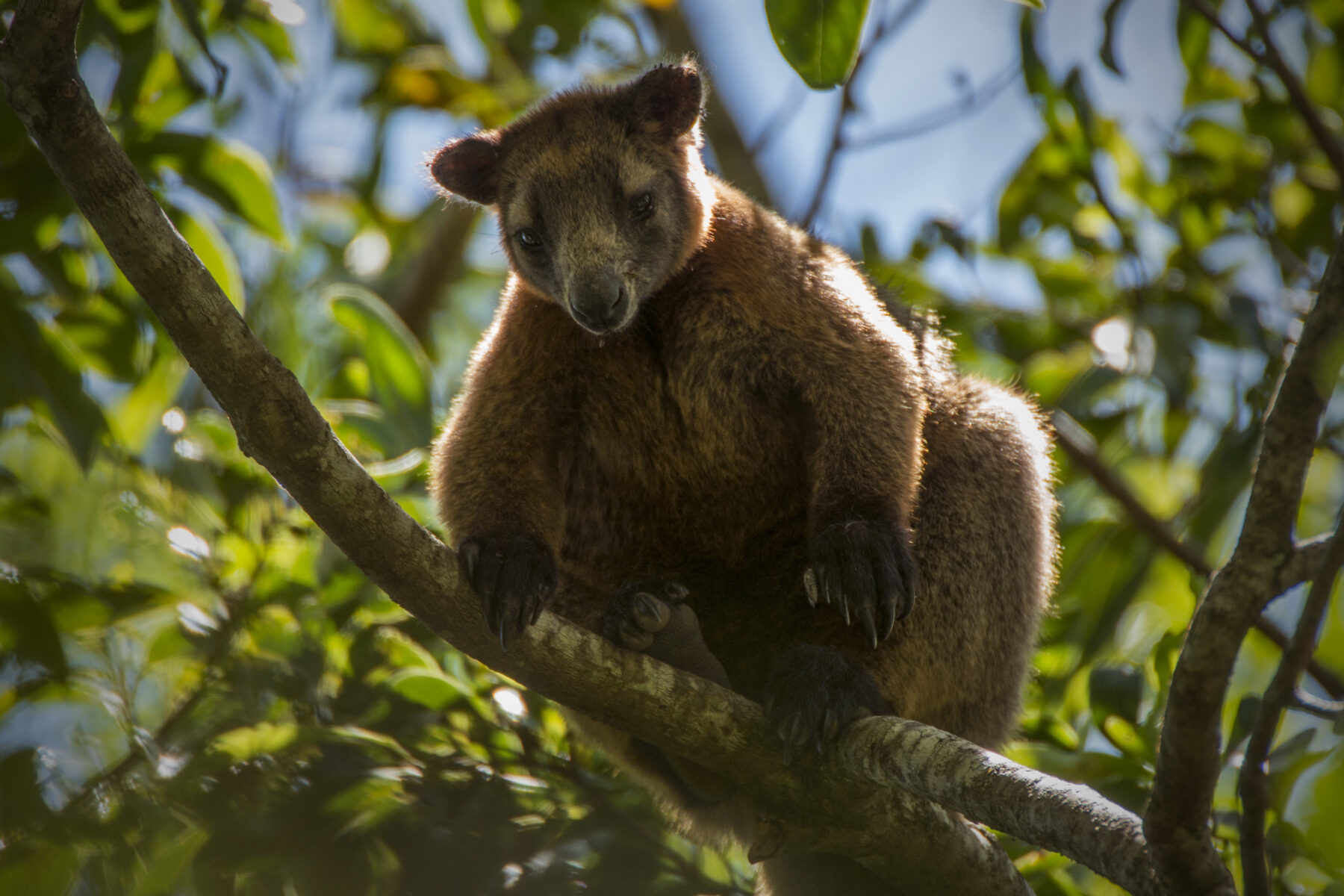
The Lumholtz’s has long, muscley forearms for climbing and short, wide back feet. Their front feet have curved claws and back feet have soft pads that mould around tree trunks to help with climbing. With reddish-grey fur and a long bushy tail, the Lumholtz’s tree kangaroo has short round ears that give its face a teddy bear-like appearance.
The Bennett’s tree kangaroo is bigger than its cousin and is grey brown with a black underside. With a long bushy, black tail that has a coloured spot at the end, the Bennett’s tree kangaroo has a greyish face with black hands and feet. Like the Lumholtz’s, the Bennett’s tree kangaroo also has shorter hindlimbs and longer forearms.
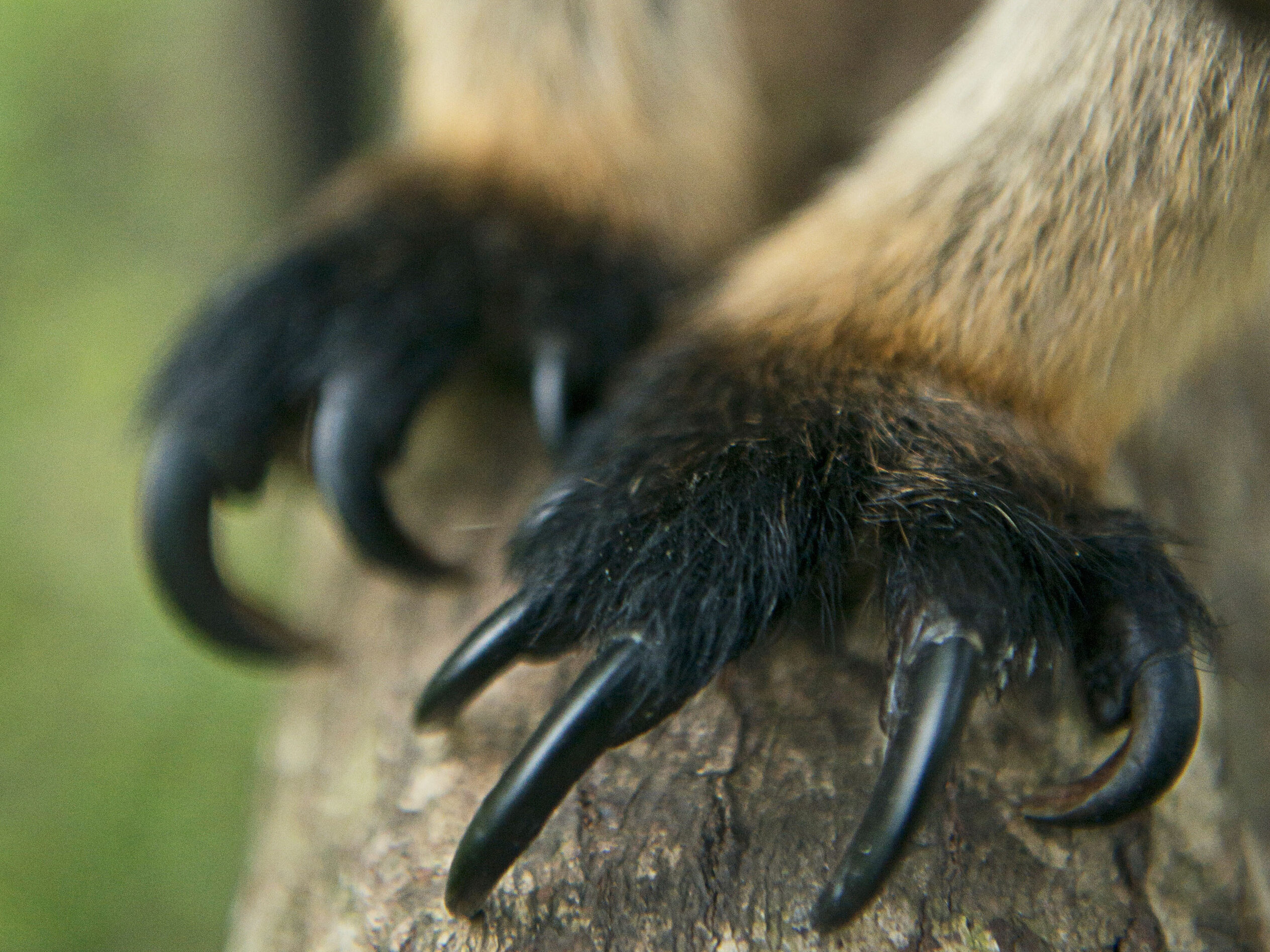
These two species of tree kangaroo are Australia’s only tree-dwelling macropods and are found high in the tree canopy of the wet tropic rainforests of far north-eastern Queensland. The Lumholtz’s makes its home in the fragmented forests of the Atherton Tablelands between the Cardwell Range and Mount Carbine, and the Bennett’s lives north of the Daintree River in a small area of wet tropics.
Records from tree kangaroo fossils found across Australia indicate that this unusual tree-dwelling kangaroo was once found right across the country, in both rainforest and dry-forest habitats and were represented by a larger number of species than those that exist today.
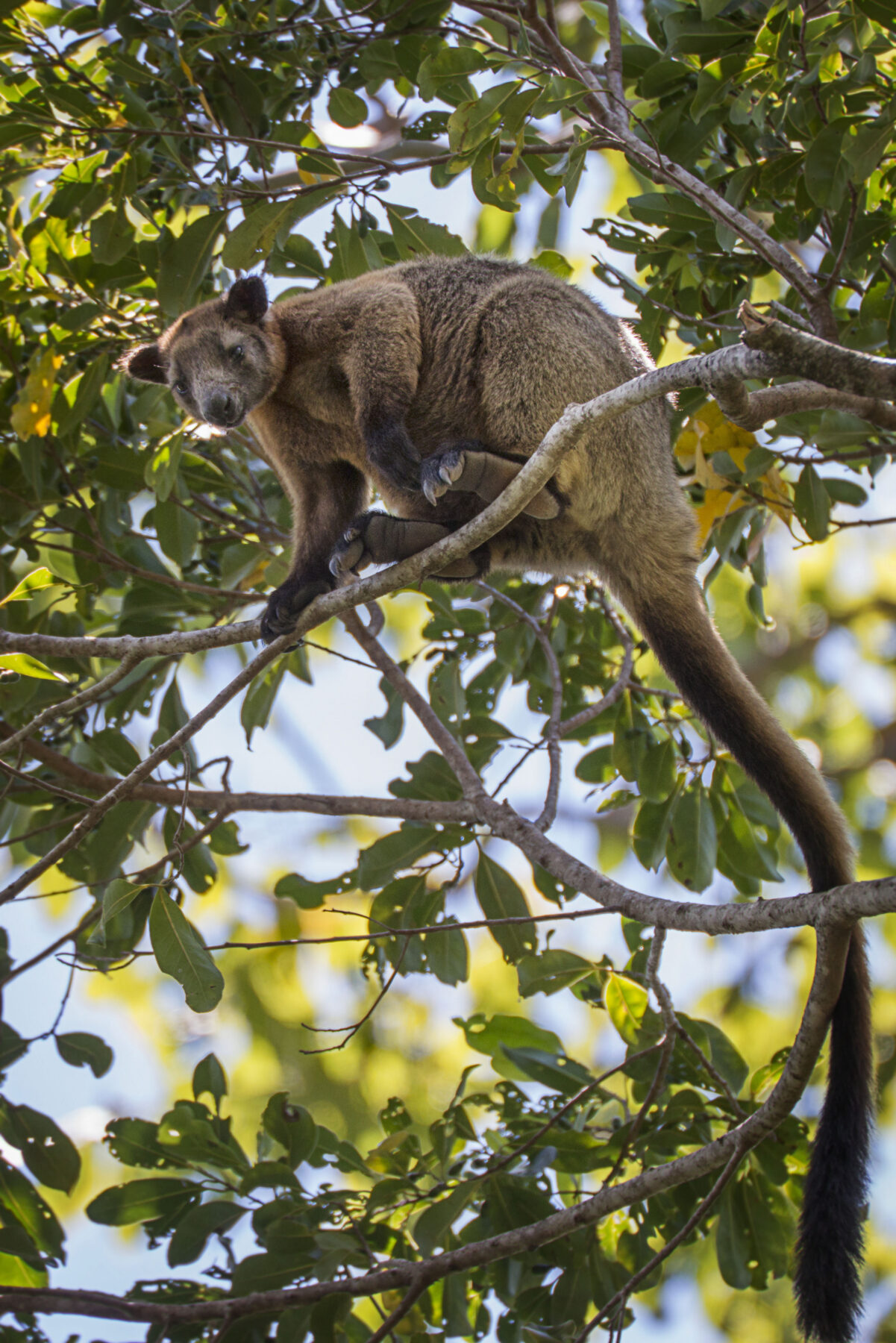
Nocturnal, tree kangaroos love a good snooze and spend around 60% of their time sleeping. But these fury critters aren’t ones to muck around building a nest or comfy bed to nap in, instead they crouch, or sleep hunched over a branch high in the tree canopy during the day.
Tree kangaroos are herbivores that survive on a diet of leaves, ferns, roots, and seasonal fruit. Agile climbers, these marsupials spend most of their time in the tops of the forest and move slowly, yet easily amongst the trees thanks to their strong forearms and long tails which help them to balance. Able to jump long distances between trees with ease, sometimes up to nine metres, tree kangaroos aren’t so graceful on the ground and tend to walk with an awkward hop.
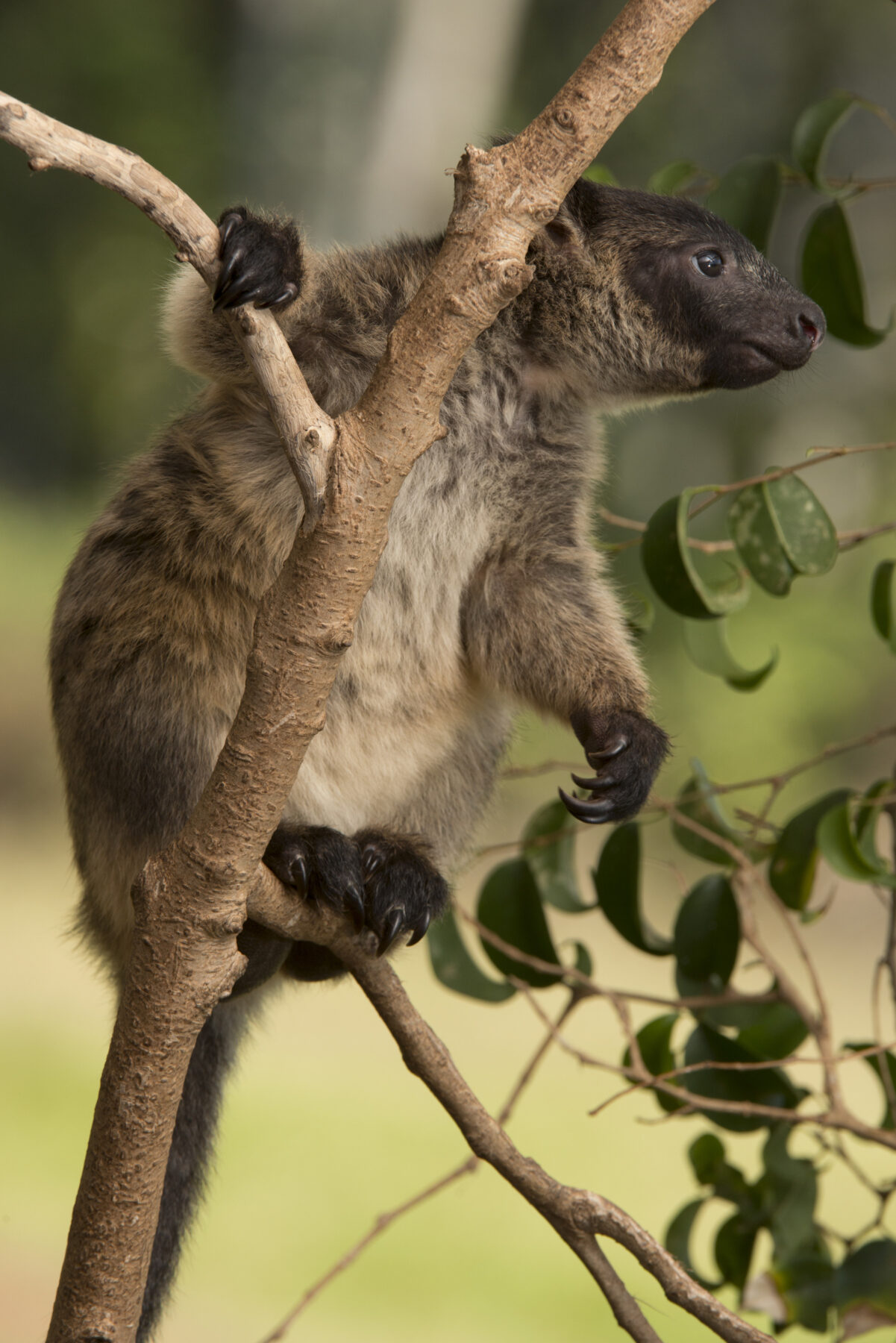
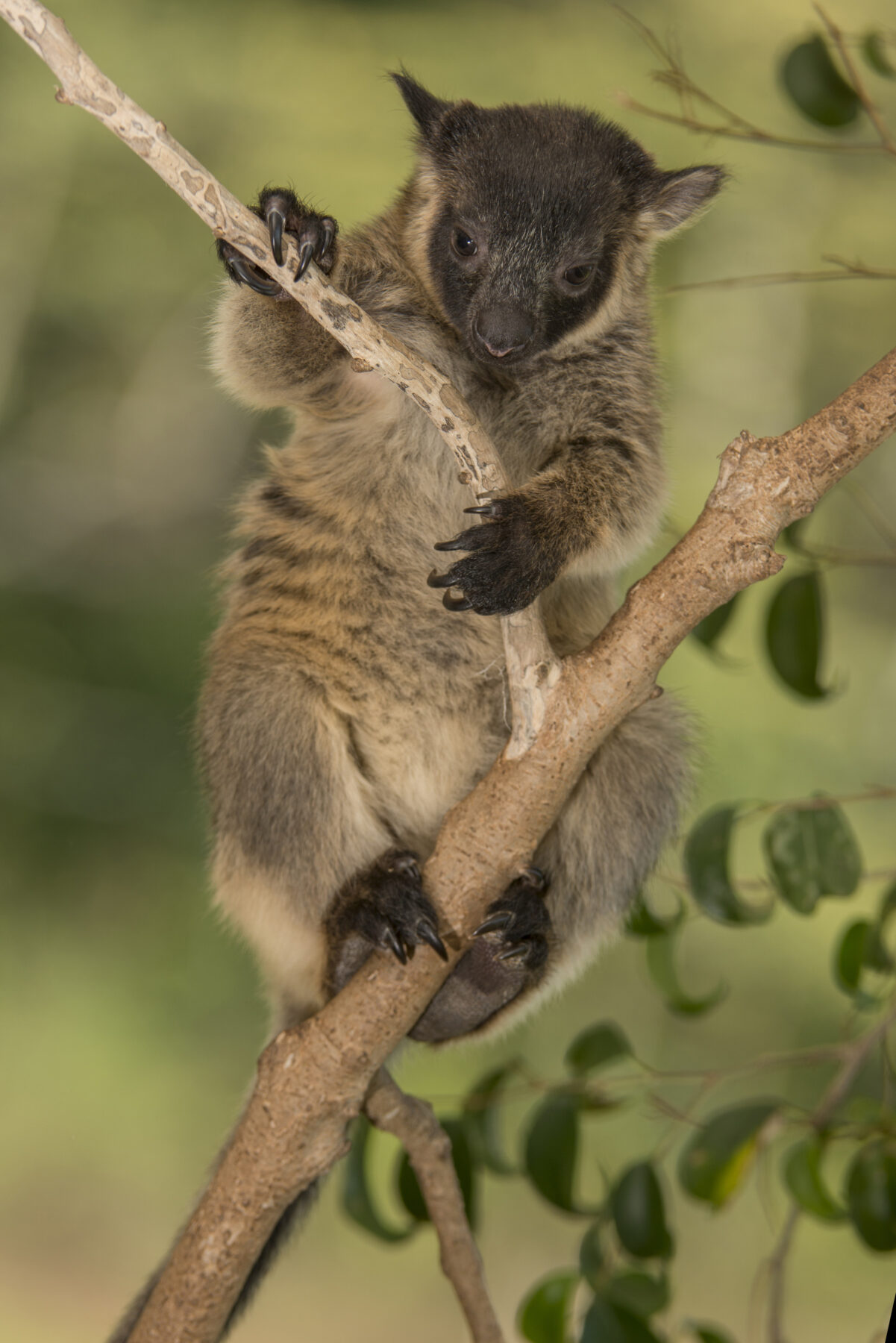
Preferring a solitary existence, Australian tree kangaroos give birth to one joey per year. Little is known about the specific breeding habits of these elusive macropods, yet scientists believe that both the Lumholtz’s and Bennett’s tree kangaroos are likely to be opportunistic breeders, with no set breeding season due to the similarities in weather all year round in far north Queensland. The tree kangaroo calf lives in its mother’s pouch for around nine months and is fully weaned after a further three to eight months. The young joey will stay with its mum for another year or so, before females become sexually mature at around two years.
Pythons and dingoes are the main predators of the tree kangaroo. Deforestation which leads to habitat fragmentation is also an ongoing threat to these unique tree-dwellers, as is the consequences of climate change.









